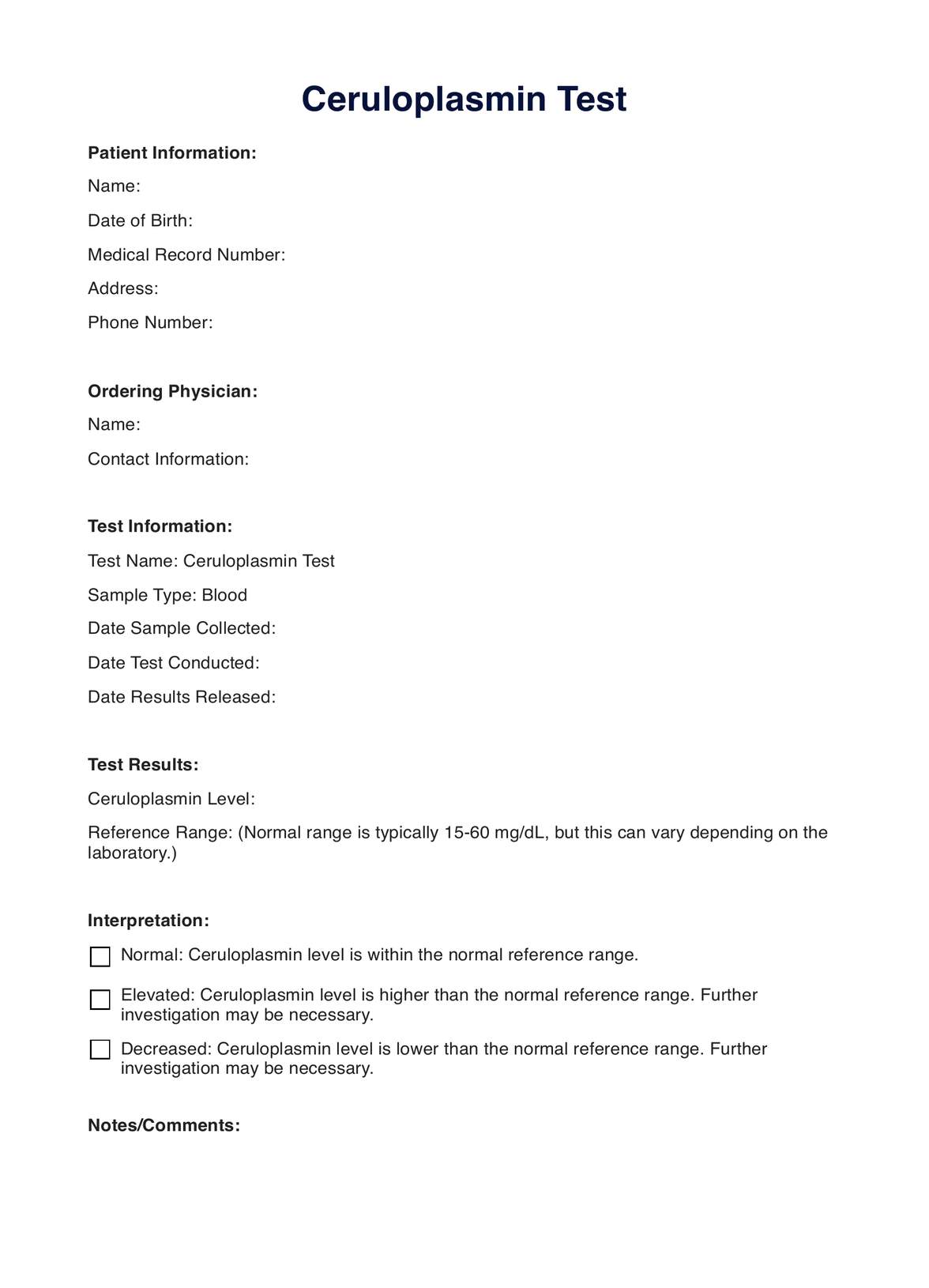Doctors typically request a Ceruloplasmin Test when they suspect a patient has Wilson's or Menkes's disease.

Ceruloplasmin
Track your Ceruloplasmin levels efficiently�??crucial for testing for copper-related disorders like Wilson's disease. Streamline your health monitoring with us.
Use Template
Ceruloplasmin Template
Commonly asked questions
Ceruloplasmin Tests diagnose conditions related to copper metabolism, such as Wilson's disease and Menkes disease.
Ceruloplasmin Tests measure the level of ceruloplasmin, a copper-carrying protein, in the blood.
EHR and practice management software
Get started for free
*No credit card required
Free
$0/usd
Unlimited clients
Telehealth
1GB of storage
Client portal text
Automated billing and online payments











